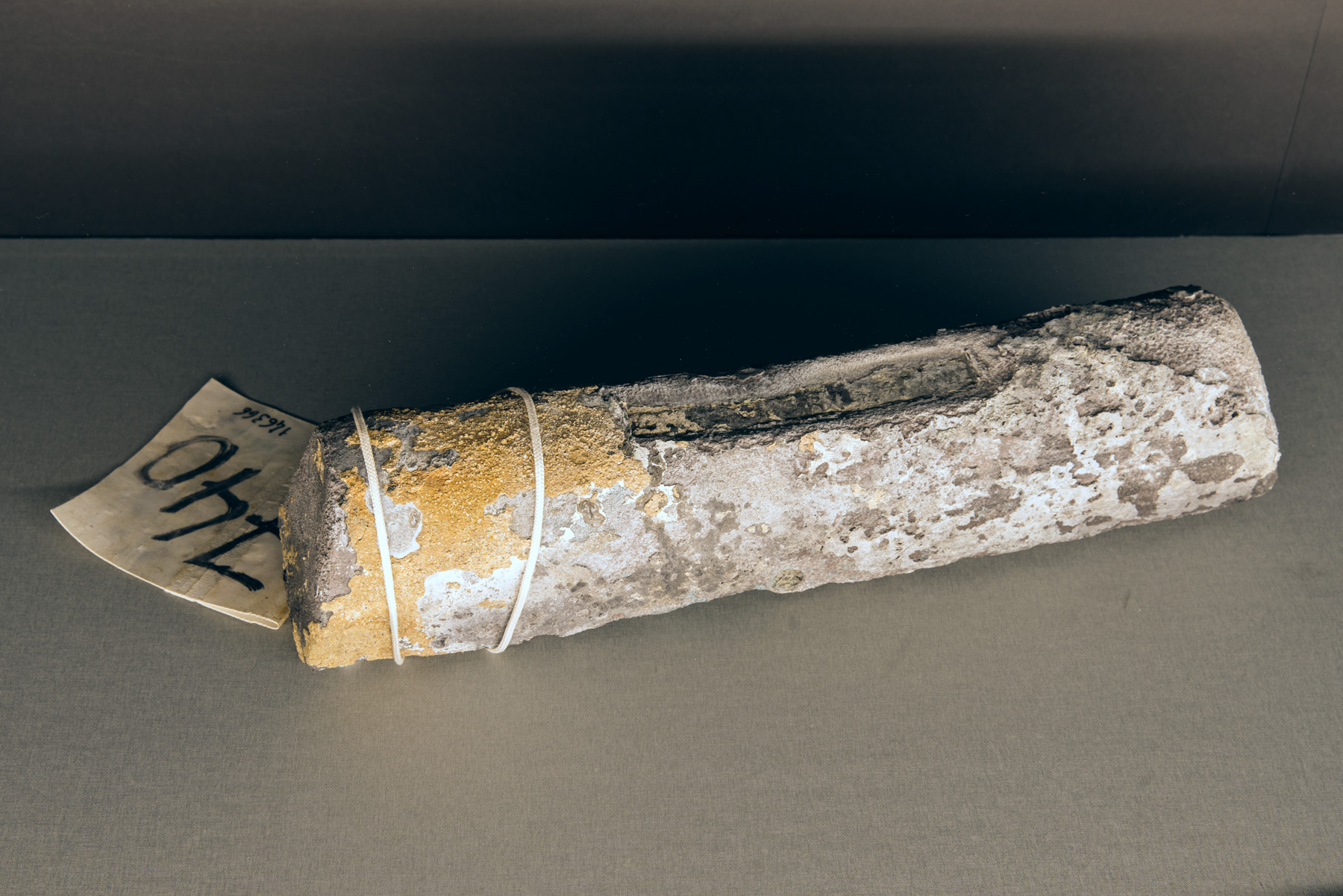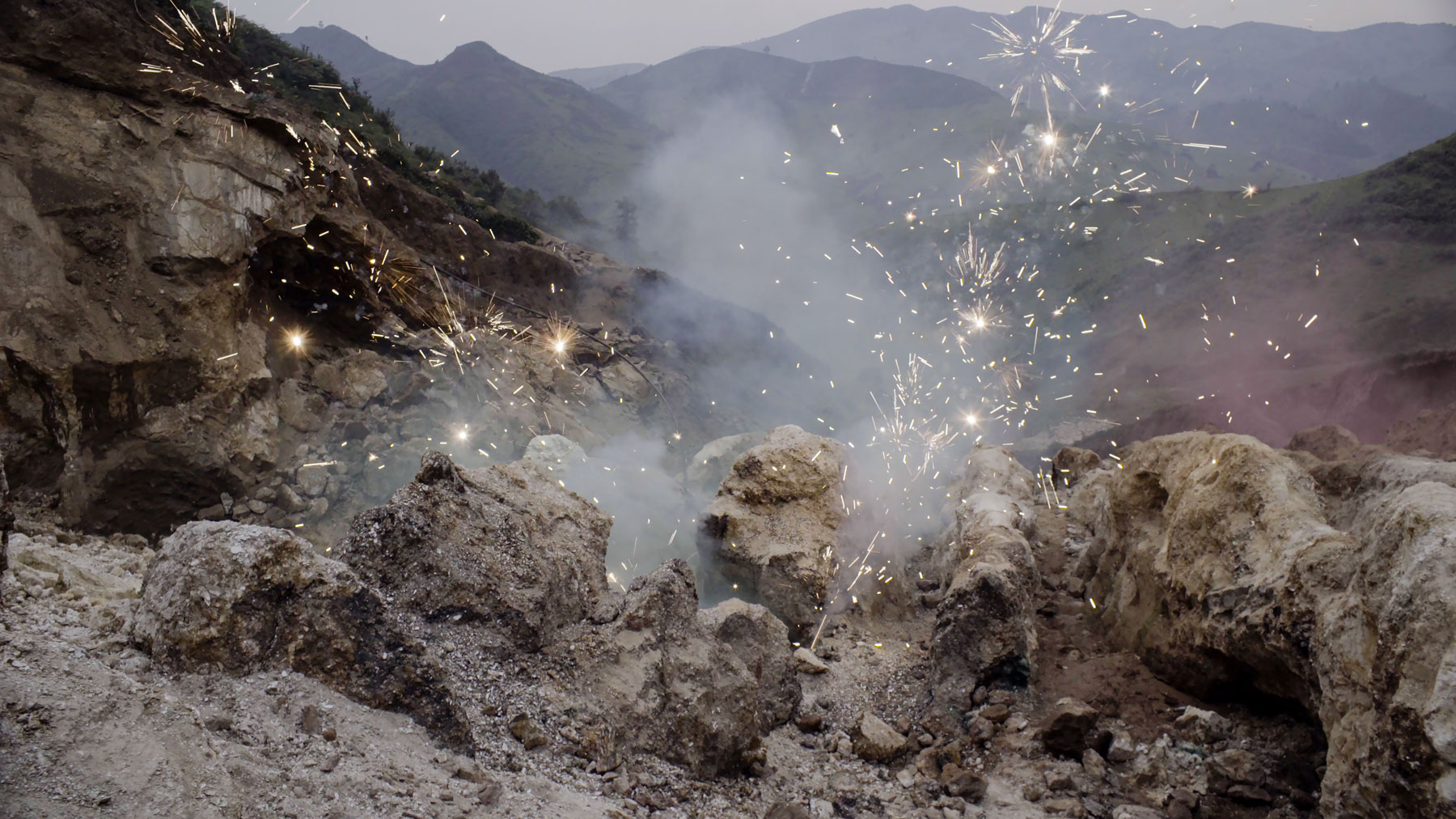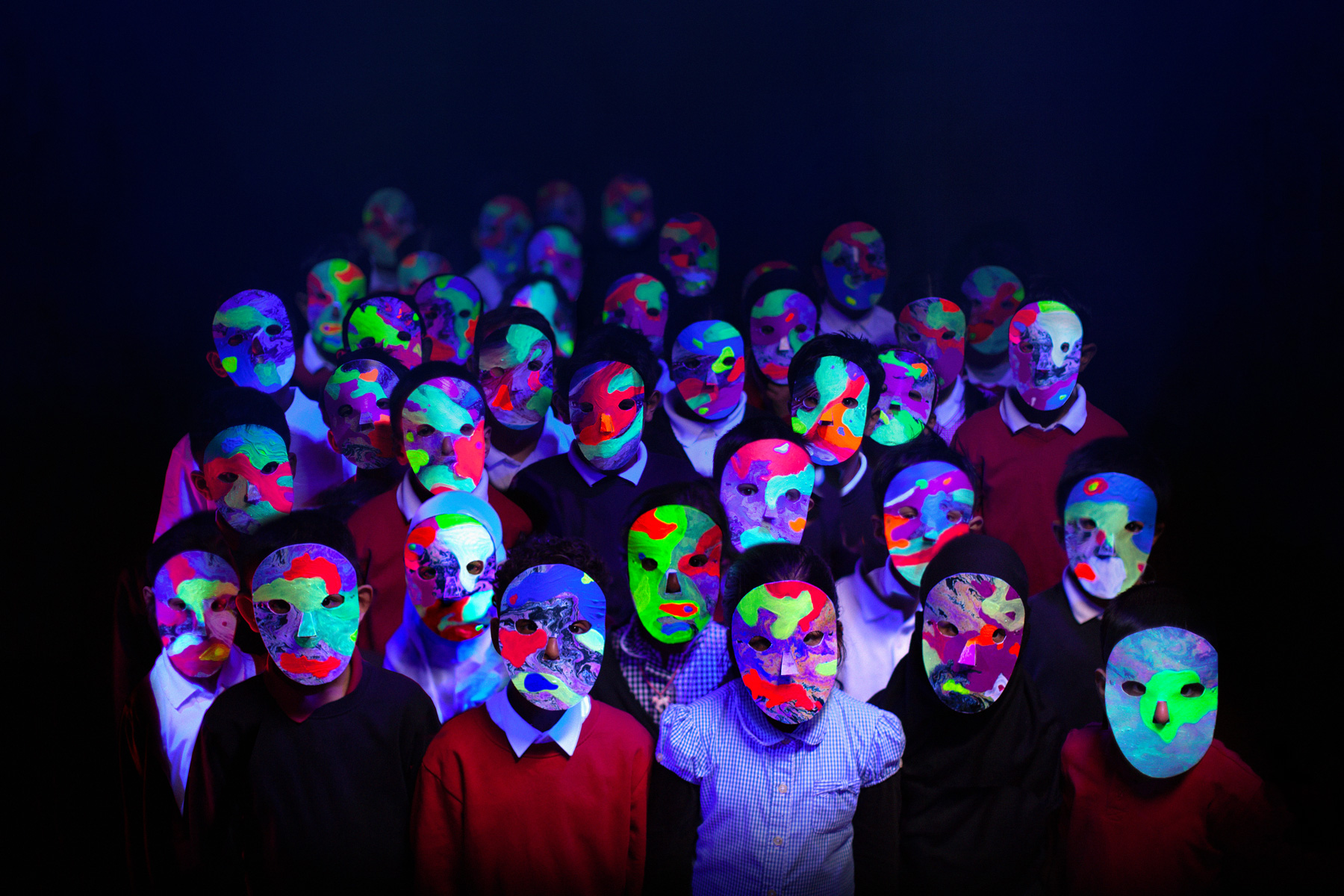
October 1-December 7, 2019
Curated by Christine Shaw
Comissioned for Logics of Sense, a two-part exhibition taking place throughout fall 2019.

These lightboxes are commissioned for Logics of Sense, a two-part exhibition taking place throughout fall 2019 in the Blackwood Gallery and e|gallery. Examining sense-in-the-making, Logics of Sense explores prediction, observation, expression, perception, and reconfiguration as tools for addressing emergent social and political realities; and it assesses shared ecological complicity through colonial pasts and capitalist futures.
Logics of Sense 1: Investigations
September 4-October 19, 2019
Logics of Sense 2: Implications
October 28-December 7, 2019

In the film Trapped in the Dream of the Other (from which this production still is drawn) a camera navigates through what the artists themselves have called a performance: in the summer of 2016, custom-made fireworks were set off in an open-air mine near Numbi in the Eastern region of the Democratic Republic of the Congo. The fireworks had been imported from Liuyang in Hunan Province, the epicentre of that industry in the People’s Republic of China. Shipping the fireworks was a kind of twenty-first century Iliad, requiring several circumnavigations of the globe, engagements with its bureaucracies, and several years’ preparation. Shipping ammunition might have been easier.
Across a number of Cohen & Van Balen’s recent works, the duo trace virtual and material connections and trade relations between China and various African nations. These works demonstrate how natural resources are being extracted in countries such as the Democratic Republic of the Congo in order to enact technological desires elsewhere, exploring how we are all connected in numerous ways to the ongoing exploitation of the region.

Mikhail Karikis’s film, No Ordinary Protest (a research project from which this image is drawn) adopts Ted Hughes’s children’s science fiction novel The Iron Woman (1993) as an ecofeminist parable in which communal listening and noise-making become tools to transform the world. In this story, a female superhero gifts children with a mysterious power—a noise. Transmitted by touch, this noise resonates with the collective howl of creatures affected by the pollution of the planet. As the children take matters of ecological devastation into their own hands, they infiltrate factories and “infect” adults with their demand for immediate action.
Engaging with a group of 7-year-olds from a London primary school, Karikis co-created a film which reflects on environmental themes of Hughes’s book and imagines the enigmatic noise that assists the protagonists in their protest. The children wear colourful—yet foreboding—masks of their own making (pictured here) which are used to enliven and collectivize their protest. While being uncertain about our ecological future, No Ordinary Protest uncovers children’s political voices and activist imaginations, where communal listening and noise-making become tools that can “move mountains” and transform our world.

Two or Three Saprophytes (the video essay from which this image is drawn) traces a speculative history of the industrial revolution: its ecological backdrop, and its legacy of technological, scientific, and economic thinking built around accumulation and “progress.” Breaking from strictly didactic or documentary forms, the film refracts its factual historical research through a hallucinatory, narrative lens, mixing reality and fiction to frame the interconnected histories of mushrooms, trees, coal, chemicals, machines, and capitalists as a kind of ecological ghost story.
Posing a counter-model to industrial capital’s destructive obsession with growth, Rufelds’ project looks to the Earth’s legion of decomposing mushrooms as protagonists, arguing that growth and decay should be granted equal importance. Informed by Marxist ecological criticism and Gothic horror fiction, as much as by scientific and historical research, Two or Three Saprophytes proposes an alternate narrative to familiar ideas of progress and ecology in the post-industrial world.

The research project G24|0vßß (which includes a 24-minute video essay and series of objects) is the result of the artist’s close collaboration with the Laboratori Nazionali del Gran Sasso (LGNS) in Abruzzo, the location of the Cryogenic Underground Laboratory for Rare Events (CUORE). This research takes place at the heart of the Gran Sasso Mountain, where the CUORE team has created the coldest point in the universe within a cubic meter of Tellurium crystal and copper.
This lead was retrieved in the late-twentieth century from a ship that was sunk off the coast of Oristano, Italy in 50 B.C.E. Archeological lead “ingots” such as these are used in the “low background” experiments at the LNGS.
The use of this ancient mineral within the contemporary experimental assemblages at the LNGS is due to its rare, uncontaminated radioactive silence, which helps to guard the delicate crystal-hearted experiment from the thick omniscient noise of our universe. Within a series of six concentric metallic shields, this ancient lead is re-cast to become the innermost layer of the protective chamber, quietly protecting the intensely chilled Tellurium dioxide crystals from the hyperchaos of the cosmos.
Revital Cohen & Tuur Van Balen work across objects, installation and film that explore process of production as cultural, personal and political practices. Their work was recently shown at the Renaissance Society in Chicago; Serpentine Cinema, London; Fotomuseum Winterthur; Para Site Hong Kong; Thyssen-Bornemisza Art Contemporary Vienna; HKW in Berlin; Museum of Contemporary Art Tokyo and Congo International Film Festival. It is part of the permanent collections of the MoMA, New York and M+ Museum in Hong Kong. They work and live in London.
Mikhail Karikis is a Greek-British artist living in London. His work embraces film, sound, performance, and photography. He employs listening as a form of activism and develops projects with communities located outside the context of contemporary art who may be pushed into economic and socio-geographic fringes. In recent years, Karikis has been collaborating with teenagers and children to explore legacies they inherit from older generations, including narratives of techno-dystopias, and ecological and economic injustice. While prompting participatory and activist imaginaries, Karikis’s projects rouse the potential for people to imagine alternative futures of self-determination and potency. Karikis has exhibited at 54th Venice Biennale, 2011; Manifesta 9, 2012; 2nd Aichi Triennale, 2013; 19th Biennale of Sydney, 2014; Kochi-Muziris Biennale, 2016; Yebisu International Festival, Tokyo Photographic Art Museum, 2019. He has recently had solo exhibitions at Whitechapel Gallery, London, (2018-2019); MORI Art Museum, Tokyo, (2019); Fondazione Sandretto Re Rebaudengo, Torino, (2019); Turku Art Museum, (2018); Aarhus 2017 European Capital of Culture, (2017) and Casino Luxembourg Forum d’art contemporain, (2017). Forthcoming solo exhibitions include his survey exhibition at Middlesbrough Institute of Modern Art (MIMA); I Hear You, De la Warr Pavilion; and an In Focus exhibition at TATE, St Ives.
Miles Rufelds is an artist, writer, and researcher based in Toronto. He holds a Master of Visual Studies in studio art from the University of Toronto, and a Bachelor of Fine Arts from the University of Ottawa. Rufelds’ interdisciplinary projects weave images, videos, documents, and objects with experimental narrative structures. His works use artistic platforms as sites to explore stories connecting the tightening holds of corporate or military power to the histories of ecology, science, industry, food, film, and aesthetics. He’s exhibited in solo and group exhibitions, as well as screening programs and lecture series’, nationally and internationally, with recent exhibitions at the Art Museum at the University of Toronto and Bunker2, SIM Gallery in Reykjavik, Roman Susan in Chicago, and an upcoming solo exhibition at PAVED Arts in Saskatoon.
Jol Thomson is an artist, sound designer, and researcher interested in the potential to bypass dominant Western rationality through critical engagements with the matter(s) and meanings of contemporary (particle) physics. Thomson completed his HBA at the University of Toronto in 2009 and received his meisterschüler in Fine Art from Professor Simon Starling at the Städelschule, Frankfurt aM in 2013. He was recently awarded an international studentship to pursue a practice-based PhD at the University of Westminster in London, where he is currently based. Between 2014–2016 he developed and taught an experimental interdisciplinary arts pedagogy for architects with artist Tomás Saraceno at the Technical University of Braunschweig in Germany. In 2016 he won the MERU Art*Science Award for his audio-visual composition G24|0vßß. That year he was a fellow of the Akademie Schloss Solitude and in 2017 he was a resident of the Bosch GmbH’s Centre for Research and Advanced Engineering, Stuttgart. Recent screenings and selected exhibitions include Recontres Internationales: Contemporary Moving Image, Pompidou, Paris and HKW, Berlin (2019);at Quantum Real: Spectral Exchange, Exhibition Research Lab, Liverpool (2019); Galleria d’Arte Moderne e Contemporanea, Bergamo (2019); Blind Faith: Between the Cognitive and the Visceral in Contemporary Art at the Haus Der Kunst, Munich (2018); Open Codes: Living in Digital Worlds, ZKM (Center for Art and Technology), Karlsruhe (2017-2018). In 2017 he published Intra-acting With the IceCube Neutrino Observatory; or, how the technosphere may come to matter, with Dr. Sasha Engelmann in a special issue of the Anthropocene Review.
The Blackwood Gallery gratefully acknowledges the operating support of the Canada Council for the Arts, the Ontario Arts Council, and the University of Toronto Mississauga. This project is generously supported through the UTM50 Anniversary Fund, established to showcase the innovative, collaborative spirit of UTM, and by the Canada Council for the arts.
